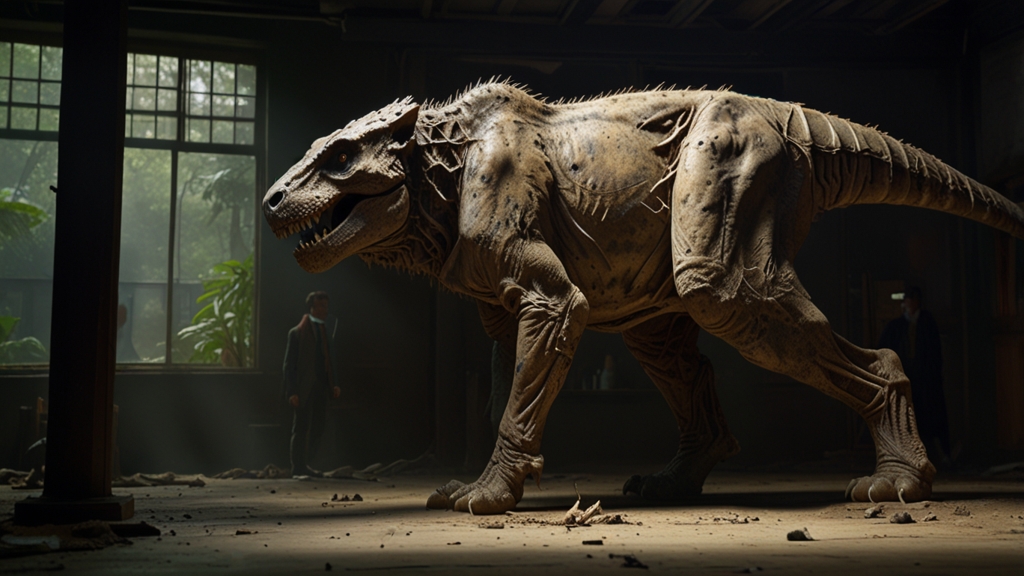From Chaos to Cosmos: The Creation Story Reimagined
Since time immemorial, humanity has grappled with questions about the origins of the universe. Our ancestors spun rich tapestries of myths and legends to explain the birth of existence from a state of chaos. These stories provided a sense of order and meaning to the mysteries that lay beyond their immediate grasp. Today, we revisit these timeless narratives to reimagine the creation story through a modern lens, blending ancient wisdom with contemporary understanding.
The Primordial Chaos
In many ancient myths, the cosmos began with a state of primordial chaos, a formless void teeming with untapped potential. Ancient Greek mythology refers to this chaotic state as Chaos, a dark, swirling abyss from which everything emerged. Similarly, in Egyptian mythology, the universe began in a watery chaos called Nu, while the Norse believed in Ginnungagap, a yawning void.
Modern science, too, paints a picture of an initially chaotic universe. The Big Bang theory suggests that the universe started from an infinitesimally small singularity, a point of infinite density and temperature. Within seconds, this singularity expanded, evolving into the vast cosmos we know today. This transition from chaos to order mirrors the ancient tales, offering a scientific perspective to these storied beginnings.
Emergence of Light and Order
Light often plays a pivotal role in creation myths. In the Book of Genesis, God commands, "Let there be light," and there was light. This divine illumination marks the birth of day and night, introducing order into chaos. In Hindu mythology, the deity Brahma opens his eyes, and the universe is bathed in light, bringing life and structure into being.
Astrophysics tells us that after the Big Bang, the universe was opaque, a murky soup of particles. As the universe expanded and cooled, particles combined to form hydrogen and helium atoms. This era, known as the "recombination epoch," allowed photons to travel freely, making the universe transparent and filling it with light. Thus, science echoes the mythic emergence of light, transforming the initial chaos into a cosmos rich with structure.
The Birth of Earth
Creation myths often detail the emergence of Earth from the cosmos. In Sumerian mythology, the goddess Tiamat's body was split to form the heavens and Earth. The Judeo-Christian tradition describes how God separated the waters to create dry land. Native American stories frequently involve deities molding Earth from clay or drawing it forth from the waters.
From a scientific standpoint, the Earth formed approximately 4.5 billion years ago from the dust and gas that surrounded the young Sun. Gravity pulled particles together to form planetesimals, which coalesced into protoplanets. Collisions and mergers eventually birthed our Earth, a functional marvel of cosmic evolution. Once again, the narrative of order emerging from chaos plays out on a planetary scale.
The Dawn of Life
Life's emergence is a central theme in creation stories. The ancient Egyptian god Atum was said to have created life through his thoughts, while the Aztec feathered serpent Quetzalcoatl made humanity from bones and his own blood. In the biblical Genesis, life begins with plants, followed by animals, and finally humans, molded in the image of the divine.
"The cosmos is within us. We are made of star-stuff. We are a way for the universe to know itself." – Carl Sagan
Science describes the origin of life as a process that began in Earth's primordial oceans. The "primordial soup" theory posits that early chemical compounds combined under harsh conditions, leading to the formation of complex molecules like RNA and proteins. Over billions of years, these molecules evolved into the intricate web of life forms that inhabit our planet today. The scientific explanation may lack the poetic flourish of myth, but it underscores the miraculous order that rose from the chaotic beginnings.
A Unified Vision
By reimagining the creation story, we find striking parallels between ancient myths and modern science. Both perspectives explore the transformation from chaos to an ordered cosmos, threading through the emergence of light, the formation of Earth, and the blossoming of life. This synthesized vision underscores the universal pursuit of understanding our origins, revealing a shared human enterprise that transcends time and culture.
In our quest for knowledge, we honor the stories passed down through generations and expand them with the insights of modern science. This amalgamation of old and new allows us a deeper appreciation of the cosmos—a dance of chaos and order, ever-evolving, and always awe-inspiring.
"We are part of this universe; we are in this universe, but perhaps more important than both of those facts is that the universe is in us." – Neil deGrasse Tyson






